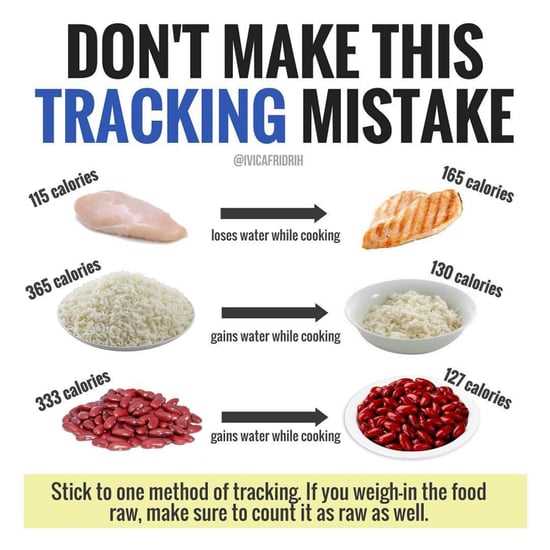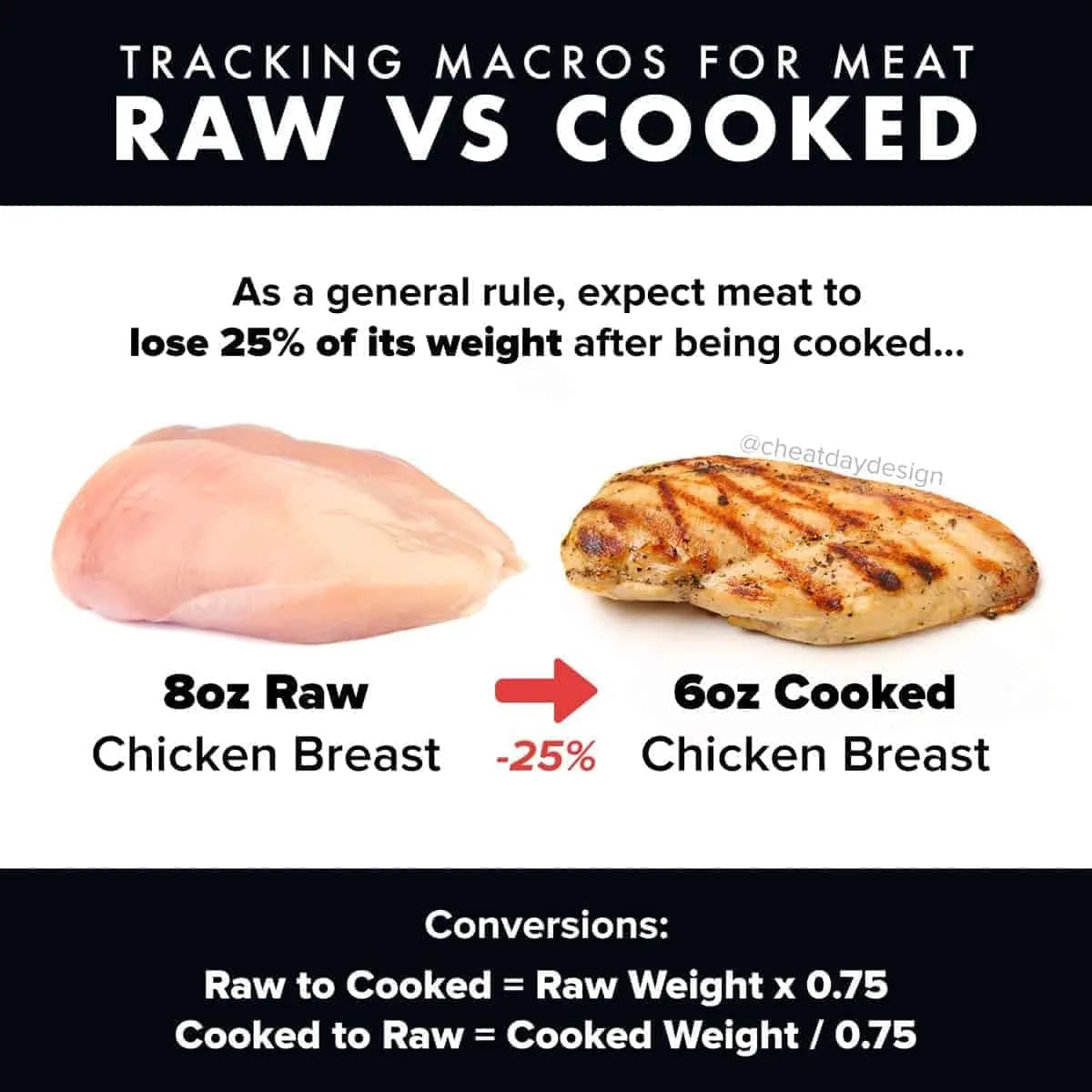

In the world of cooking and baking, measurements are crucial for achieving the desired results. Whether you are following a recipe or trying to control portion sizes, knowing how to measure your ingredients accurately is essential. But when it comes to measuring food, do you measure it cooked or uncooked?
This question often arises, especially when it comes to calorie counting and nutrition tracking. Some people argue that measuring food in its raw state is more accurate, as cooking methods can alter the weight and nutrient content. Others believe that measuring cooked food is more practical, as it reflects the final product that you will consume. So, which approach is the right one?
The answer may depend on your personal preferences and goals. Measuring food uncooked can provide a more accurate representation of its nutrient content and portion size. However, it can be challenging to estimate the final cooked weight accurately. On the other hand, measuring food cooked can be more convenient, as you can easily portion out your meals based on the final product. However, keep in mind that the nutrient content may change during the cooking process.
Ultimately, the choice between measuring food cooked or uncooked may depend on your individual needs and the specific recipe or situation. It is important to be consistent in your measurements to ensure accurate tracking and consistent results. Whether you choose to measure food cooked or uncooked, always remember to prioritize portion control and mindful eating for a healthy and balanced diet.
Do You Measure Food Cooked or Uncooked
When it comes to measuring food, there can be some confusion about whether to measure it cooked or uncooked. This is because the weight and size of food can change during the cooking process, which can affect the overall nutritional content and the number of servings you end up with. It’s important to understand the difference and measure your food correctly to ensure accurate portion sizes and nutritional information.
Measuring Food Cooked
Measuring food after it is cooked is a common practice for certain types of food, especially when it comes to meat. This is because cooking causes meat to lose moisture and shrink in size. When you measure cooked meat, you can get a more accurate representation of the actual amount of meat you will consume. For example, if a recipe calls for 8 ounces of cooked chicken breast, you should measure 8 ounces of chicken breast after it has been cooked.
Measuring Food Uncooked

However, there are certain instances where it is more appropriate to measure food in its uncooked state. This is especially true for ingredients like rice, pasta, and grains. These foods absorb water when cooked, which causes them to increase in volume and weight. If a recipe calls for 1 cup of uncooked rice, for example, you should measure out 1 cup of rice before cooking it.
In some cases, the packaging of the food may provide both cooked and uncooked measurements. This can be helpful in determining the appropriate measurement based on your specific needs. Additionally, using a kitchen scale can provide the most accurate measurements, regardless of whether you are measuring the food cooked or uncooked.
Ultimately, it is important to pay attention to the specific instructions in a recipe and determine whether the food should be measured cooked or uncooked. By doing so, you can ensure that your meals are prepared with the correct portion sizes and that the nutritional information remains accurate.
Understanding the Importance
When it comes to cooking and measuring food, one question that often arises is whether to measure ingredients cooked or uncooked. This may seem like a small detail, but it can actually have a significant impact on the final results of your culinary creations.
Measuring food cooked or uncooked can make a difference in terms of accuracy and nutritional value. When you measure ingredients in their uncooked state, you have a more precise measurement of the actual amount of food you are using. This is especially important when it comes to recipes that require specific ratios or quantities.
However, there are instances where measuring food cooked may be more appropriate. For example, if you are following a recipe that calls for cooked ingredients, such as pasta or rice, measuring them in their cooked state would be more accurate. This is because these ingredients can absorb water and increase in volume during the cooking process, which can affect the final measurements.
Additionally, measuring food cooked may also be necessary for tracking nutritional values. Cooking can alter the nutritional composition of food, such as changes in moisture content or nutrient levels. Therefore, if you are trying to monitor your calorie intake or ensure a balanced diet, it is important to measure food in its cooked state to get a more accurate representation of its nutritional value.
In conclusion, the decision to measure food cooked or uncooked ultimately depends on the specific recipe and the desired outcome. Understanding the importance of accurate measurements and considering factors such as recipe requirements and nutritional values can help you make informed decisions and achieve the best results in your culinary endeavors.
Factors to Consider
When deciding whether to measure food cooked or uncooked, there are several factors to consider. These factors can influence the accuracy of your measurements and the nutritional information you receive. Here are some key considerations:
Water Content
Food can lose water during the cooking process, leading to a decrease in weight. Measuring food cooked or uncooked can affect the accuracy of your measurements, especially if water loss occurs. For example, when measuring rice uncooked, the water content can significantly increase the weight. On the other hand, when measuring meat cooked, the water content may decrease, leading to a lower weight.
Nutrient Loss
Cooking can cause nutrient loss in food due to factors such as heat and water exposure. The extent of nutrient loss can vary depending on the cooking method and duration. When measuring food uncooked, you may be getting a higher nutrient content compared to measuring it cooked. This is because some nutrients can be lost during the cooking process. Nonetheless, cooking can also make certain nutrients more bioavailable, so it is important to consider the overall impact on nutrition.
Furthermore, certain vitamins, such as vitamin C, are highly sensitive to heat and may degrade significantly during the cooking process. Measuring food cooked or uncooked can have implications for the accuracy of nutrient calculations, especially for vitamins and minerals that are affected by cooking.
Recipe Considerations
Whether you measure food cooked or uncooked can also depend on the recipe you are following. Some recipes may specify the measurement to be taken before cooking, while others may specify after cooking. It is important to follow the recipe instructions to ensure accurate results and the desired outcome.
In addition, measuring food cooked or uncooked can affect portion sizes and the number of servings. For example, if a recipe calls for 200 grams of uncooked pasta and you measure it cooked, the weight may change due to water absorption, potentially affecting the overall texture and taste of the dish.
Overall, the decision to measure food cooked or uncooked depends on the specific circumstances and goals. It is important to consider factors such as water content, nutrient loss, and recipe instructions to make the most informed choice for your cooking and nutritional needs.
Different Measurement Methods

When it comes to measuring food, there are several methods that can be used. The choice of method often depends on personal preference or the specific recipe being followed.
Measuring Uncooked Food
Some people prefer to measure food in its uncooked state. This method is commonly used when following recipes that specify ingredients in their raw form. For example, when measuring rice or pasta, you would use a measuring cup to measure the uncooked amount before cooking.
It’s important to note that the volume of food may change once it’s cooked. For example, one cup of uncooked rice may yield more than one cup of cooked rice once it has absorbed water. Understanding how the food will change during the cooking process is important when using this method.
Measuring Cooked Food
Alternatively, some people prefer to measure food after it has been cooked. This method is commonly used when the recipe calls for a specific amount of cooked food. For example, if a recipe calls for two cups of cooked rice, you would cook the rice first and then measure it after cooking.
When measuring cooked food, it’s important to keep any liquid or oils that may have been absorbed during cooking in mind. These can affect the weight or volume of the cooked food, so it’s important to drain or account for them in your measurements.
Weight Measurement
Another method of measuring food is by weight. This method is often used in professional kitchens or when following recipes that provide weight measurements. Using a kitchen scale, you can accurately measure the weight of both cooked and uncooked food.
Weight measurements are more precise and can be particularly useful when following baking recipes that require specific ratios of ingredients. However, not all home kitchens have kitchen scales, so this method may not be accessible to everyone.
- Measuring food can be done in its uncooked or cooked state, depending on personal preference or the recipe’s instructions.
- Uncooked food is often measured using measuring cups, while cooked food is measured either by volume or weight.
- Understanding how the food will change during cooking is important when measuring in its uncooked state.
- When measuring cooked food, accounting for any added liquids or oils is crucial.
- Weight measurement provides more precise results, but may not be accessible to everyone due to the need for a kitchen scale.
Ultimately, the method you choose to measure food depends on your personal preference and the specific recipe you are following. Both uncooked and cooked measurements can be accurate, as long as you understand how the food will change during the cooking process.
Questions and answers
Do you measure food cooked or uncooked?
We usually measure food in its uncooked state as it provides a more accurate measurement for nutritional purposes.
Why do you measure food in its uncooked state?
Measuring food in its uncooked state allows for a more accurate calculation of nutrients and calories, as the cooking process can alter the weight and composition of the food.
Does measuring food cooked or uncooked affect portion sizes?
Measuring food cooked or uncooked can affect portion sizes, as cooking can result in a reduction in weight due to moisture loss. To ensure accurate portion sizes, it is generally recommended to measure the food in its uncooked state.
What are the benefits of measuring food in its uncooked state?
Measuring food in its uncooked state allows for better portion control, accurate tracking of nutrient intake, and consistency in meal preparation. It also helps in determining the nutritional value of recipes and planning balanced meals.
Is there any situation where measuring food in its cooked state is preferable?
In some cases, measuring food in its cooked state may be preferred, such as when following a recipe that provides nutritional information for the cooked product. However, for accurate tracking of nutrients and portion control, measuring food in its uncooked state is generally recommended.







